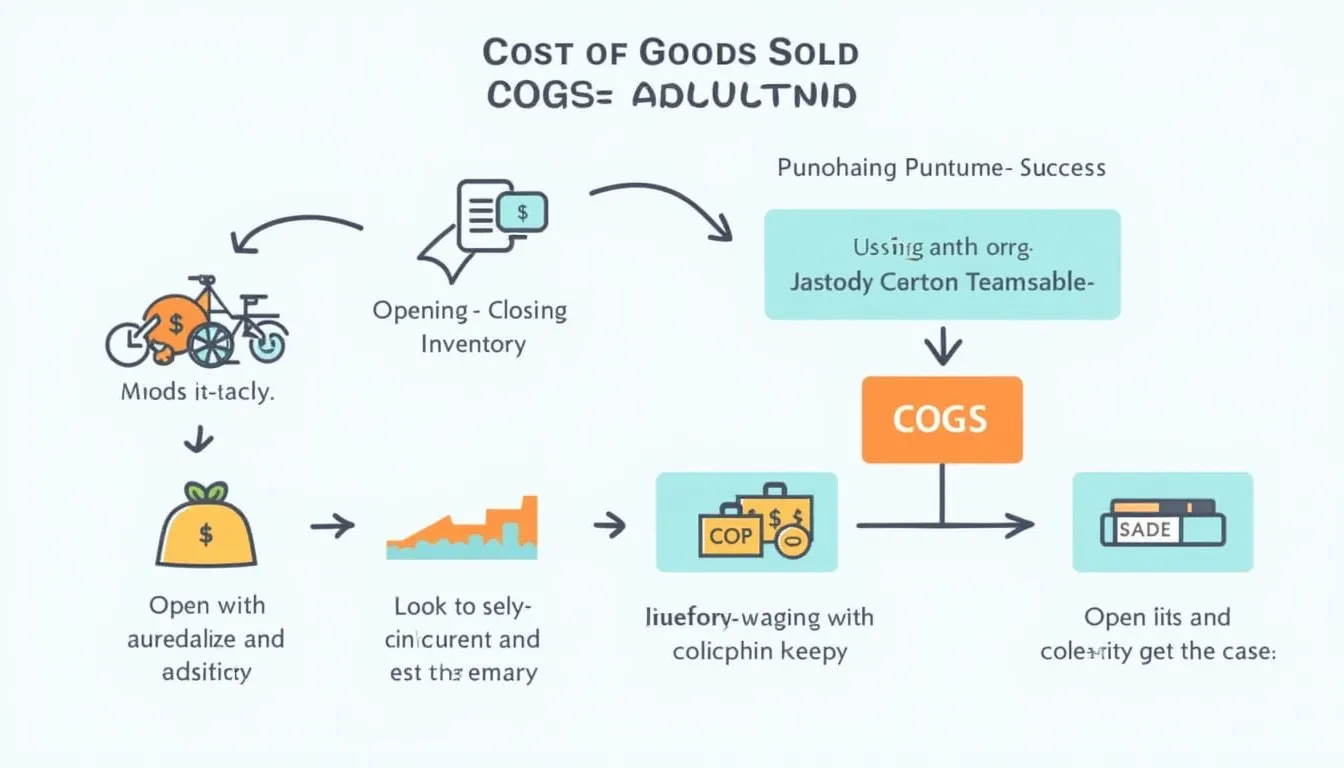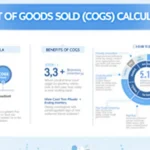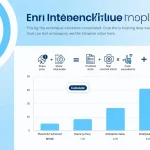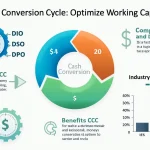Cost of Goods Sold (COGS) Calculator
Is this tool helpful?
How to use the tool
- Opening Inventory: type the period-start stock value. Sample inputs: 20 000.00 or 7 200.00.
- Purchases: enter the cost of goods bought or produced. Examples: 35 750.00 or 12 880.00.
- Closing Inventory: add the period-end stock value, e.g., 18 400.00 or 6 900.00.
- Press “Calculate”: the script shows your COGS instantly.
Formula used
$$ \text{COGS} = \text{Opening Inventory} + \text{Purchases} – \text{Closing Inventory} $$
Worked examples
- Example 1: 20 000 + 35 750 – 18 400 = 37 350.
- Example 2: 7 200 + 12 880 – 6 900 = 13 180.
Quick-Facts
- GAAP requires COGS disclosure on every income statement (FASB ASC 330-10).
- Retailers average 70 % of sales as COGS (NRF Retail Facts 2023).
- IRS Form 1125-A lists allowable COGS categories (IRS 2023).
- Inventory must be cost or lower-of-cost-or-market (“You must value your inventory at cost unless permitted…” IRS Pub 538).
FAQ
What costs belong in COGS?
Include direct materials, production labor, and factory overhead tied to items sold (IRS Form 1125-A Instructions 2023).
How does COGS affect gross profit?
Gross Profit = Revenue − COGS. Lower COGS lifts gross margin and signals efficient production (KPMG Cost-Management Guide 2022).
Can COGS be negative?
No. A negative result indicates mis-keyed inventory or purchase data; review inputs immediately (PwC Accounting Manual 2023).
How often should you calculate COGS?
Most firms compute COGS monthly for management reports and annually for tax filings (Deloitte Inventory Survey 2022).
Which inventory methods impact COGS?
FIFO, LIFO, and Weighted-Average change unit cost flow, altering COGS and taxable income (IRS Pub 538 § Inventory Methods).
Does COGS include shipping?
Inbound freight to acquire inventory belongs in COGS; outbound freight is a selling expense (IRS Pub 334 Small Business Tax Guide 2023).
How can you reduce COGS?
Negotiate supplier discounts, adopt lean production, and improve demand forecasting to cut carrying costs (McKinsey Operations Review 2023).
What documentation supports COGS during an audit?
Keep purchase invoices, inventory counts, and cost worksheets; “adequate records must support every COGS figure” (IRS Audit Techniques Guide 2022).
Important Disclaimer
The calculations, results, and content provided by our tools are not guaranteed to be accurate, complete, or reliable. Users are responsible for verifying and interpreting the results. Our content and tools may contain errors, biases, or inconsistencies. Do not enter personal data, sensitive information, or personally identifiable information in our web forms or tools. Such data entry violates our terms of service and may result in unauthorized disclosure to third parties. We reserve the right to save inputs and outputs from our tools for the purposes of error debugging, bias identification, and performance improvement. External companies providing AI models used in our tools may also save and process data in accordance with their own policies. By using our tools, you consent to this data collection and processing. We reserve the right to limit the usage of our tools based on current usability factors.







